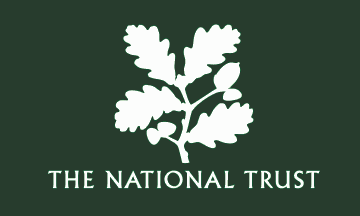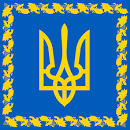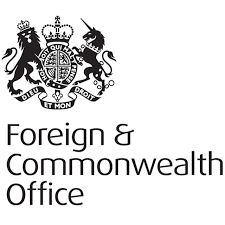PRESS RELEASE : Sketch by Sir Edwin Lutyens of his original design for the Cenotaph at Whitehall is discovered among papers at Scotney Castle [November 2022]
The press release issued by the National Trust on 10 November 2022.
A sketch by Sir Edwin Lutyens of his design for the original Cenotaph in 1919 has been discovered among papers in the archive at National Trust property Scotney Castle in Kent.
The sketch, in black and white and coloured pencil, depicts the first Cenotaph at Whitehall, London, with a military figure stationed at each corner, and two wreaths. Lutyens had written next to the sketch, “wreaths from the King” and “Queen Alexandra” with question marks next to them, leading to the question, was the sketch done before the first ceremony took place?
Scotney Castle was the former home of architectural historian Christopher Hussey whose biography of Lutyens is considered by many to be one of the best on his life and career.
Lutyens’ design for the first Cenotaph was in wood and was created at speed in 1919 for the ceremony to commemorate the end of the First World War. Following the outpouring of support for it, the decision was made to replace it with a more permanent version in Portland stone which is the one that remains today.
How the newly discovered sketch of it came to be at Scotney Castle is still a mystery.
National Trust curator Jerzy-Kierkuc-Bielinski explained: “Scotney’s archive contains boxes of Hussey’s research notes and other documents related to the Hussey family, and we are preparing to move them to the Kent Records Office at Maidstone so scholars and the general public can access and study them more easily. Before we transfer them, I have been reviewing the documents which is when I discovered the sketch.
“There are other sketches by Lutyens of his design for the Cenotaph in other collections and institutions, but why we have this one at Scotney is a bit of a puzzle. It is sketched on the reverse of a sheet of notepaper with Lutyens’ London address on it. The drawing on note paper suggests this may have been done as an informal architectural study where Lutyens was thinking about elements of the design for himself rather than to show anyone else.
“Possibly, Lutyens was using this drawing to decide where best wreaths could be placed so that they could be seen during the commemorations in July 1919 to mark the end of the First World War. How exactly Christopher Hussey acquired the drawing needs more research but, as editor of Country Life, he was well-aware of Lutyens’ work as an architect of many country houses. It is likely that the drawing came to Scotney as part of the research Hussey was undertaking into his 1950 biography of Lutyens.”
Jerzy continued: “We have more research to do to discover how and why the sketch came to be at Scotney and will share more with our visitors when the house re-opens in the spring and we can display it. But one thing is for certain, as one of Lutyens’ most important commissions, this little sketch of the first Cenotaph is a remarkable find. It is a real piece of history.”
Collating the Hussey papers is part of a major project that has been ongoing at Scotney Castle to catalogue all the documents and other collections since the house came into the care of the National Trust in 2007.
During this time, several other notable discoveries have included a metal trunk full of memorabilia discovered in the attic, amassed by Brigadier General Arthur Hussey during his time in action during the First World War, and a vast collection of ancient coins spanning 25 centuries, gathered by Edmund Hussey III and his son in the 19th century, found in the back of a drawer.



